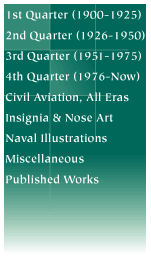
![]()

The Fairey Battle
By Chris Banyai-Riepl
The Fairey Battle was a sleek-looking airplane, but unfortunately it was extremely vulnerable to enemy fighters and by the time the Second World War came to France, the Battle was already hopelessly outclassed. This did not prevent England from sending hundreds of these planes to France to try to halt or at least slow down the German invasion, though. Unfortunately, the fate of most Battles was that of being shot down.
After France, the Battle was quickly relegated to second-line duties such as target towing and training, in which it performed much better. For a more in-depth review of the Fairey Battle, take a look at the Aviation What-Not February 1998 issue (available on CD-ROM) for an excellent article on Fairey's light bomber.

Fairey Battle P2332, PH-F
F/O Norman Thomas
'A' Flight, No. 12 Squadron
Belgium, 1940
This Battle was shot down on May 12, 1940 by German anti-aircraft guns during a raid on the Maastricht bridges. Five crews volunteered for this raid, developed in answer to the German assault started two days earlier. Hoping to stop the German advance on Brussels, these five crews from "The Dirty Dozen" No. 12 Sqn attacked the bridges. All five planes were shot down, but one of the bridges was seriously damaged in the raid. F/O D. E. Garland and his observer Sgt. T. Gray were posthumously awarded the Victoria Cross for leading the attack. They were the first two RAF VC recipients of WWII.

Fairey Battle L5587, GR-F
No. 301 Squadron (Polish), 1940
After the fall of Poland in 1939, many pilots and aircrew escaped to England to fly in the RAF. This example was flown by Polish crews of No. 301 Squadron in 1940.

Fairey Battle K9353, HA-J
No. 218 Squadron
France, 1940
This Battle took part in the "Phoney War" in France in 1940. No fin flash is present, and no underwing roundels are present either. The serial is repeated on both the rudder and the fuselage.

Fairey Battle, B282
Greek Air Force
One of the foreign operators of the Fairey Battle was Greece, as seen in this example. Standard RAF camouflage was used, with Greek roundels in six positions. The code "B282" was carried on the lower wings in white.

Fairey Battle, White 63
Belgian Air Force
Another foreign user of the Battle was Belgium. Again, the finish is standard RAF style, with Belgian roundels in all six positions. The only identifying marks for individual aircraft was a white number on the rudder.
UPDATE 4.01.01: New information has come to light, with the above profile being a pretty poor example of the Belgian Battles. I will be working on a correction soon and will post the correct scheme shortly.

Fairey Battle 1922, Black 55
RCAF
The Canadians were the other main user of the Fairey Battle, mainly in training squadrons. This particular example retained its RAF camouflage but had the RCAF serial applied on a patch of trainer yellow on the rear fuselage. The white band and black numbers identify it as part of a training squadron.

Fairey Battle 1699, White 3
RCAF
Canada made use of the Battle as a target tug, painting them up in a very visible scheme consisting of yellow with black stripes. Battle target tugs served in the RAF and RAAF as well as with the RCAF.

Fairey Battle 1640, White 43
No. 1 Bombing & Gunnery School, RCAF
Jarvis, Ontario, Canada
Most RCAF Battles in training squadrons were finished as this one is, in a yellow-orange scheme. The blue band and white numbers add a bit of contrast to this colorful plane.